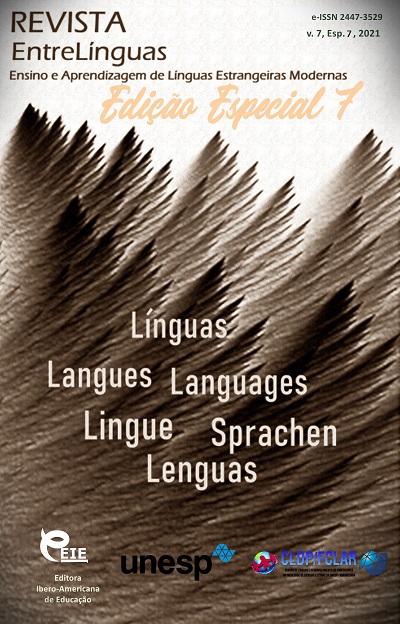The capacity of working memory and learning second language structures in an implicit and explicit environment
DOI:
https://doi.org/10.29051/el.v7iesp.7.16302Keywords:
Memory capacity, Second language, Learning environment, Implicit environmentAbstract
This study aims to determine the relationship between working memory capacity and learning second language structures in an implicit and explicit learning environment and the role of complex or straightforward language structure in this relationship. Hence, two English language structures with different degrees of complexity were selected. Fifty-nine English-speaking Persian learners were selected through a test and randomly assigned to one of two explicit or implicit groups and received the necessary training. Their level of knowledge of these two language features was assessed once before the training and twice after the training, with the test of "timed grammatical judgment" and "summoned oral imitation". A composite memory capacity test was used to measure working memory capacity. The results showed that the effect of training on learning the desired structures was significant in both groups. Correlation results showed no meaningful relationship between working memory capacity and learning in an implicit environment.
Downloads
References
“Breuer Marcel Lajoche”. (2004). Great Russian Encyclopedia, Vol.4, 189 p
“Laszlo Mohoy Nagy and the Russian avant-garde”(2006)., Three squares, 296 p.,
Boucher, W. (1999). Spinoza In English, A Bibliography. A&C Black.
Galeeva, Z.N., Yao, M.K., Emanova, J.G., & Rauzeev, I.Z. (2019). SPECIFICITY OF NATIONAL VISION IN COSTUME. Revista TURISMO: Estudos e Práticas, 1.
Henrickson, C.N. (2013). The Archaeology of Cueva Santa Rita: A Late Holocene Rockshelter in the Sierra de la Giganta of Baja California Sur, Mexico. University of California, Berkeley.
Kadyjrova, L. H., Akhmetshina, E. G., Zaripova, L. R., & Peremislov, I. A. (2019). Professional development of bachelor designers by means of information and communication technologies. International Journal of Innovative Technology and Exploring Engineering, 9(1), 5119-5122.
Klein, J. T. (2008). The rhetoric of interdisciplinarity. The Sage handbook of rhetorical studies, 265-284.
Kulakov, G. (1992). “Mohoy Nagy and “the Bauhaus”. Photography, № 3 - 4, pp. 36 – 38.
Kulakov, G. (2016). “Photographer Mohoy Nagy and “the Bauhaus”. Painting. Photography. Design, 23.09. URL: http://artageless.com/photographer-laszlo-moholy-nagy-and-bauhaus
Галеева, З. Н. (2018). Investigation of The Influence of Valuable-Sensitive Indicators of Future Designers On Their Preparation for Professional Activity.
Downloads
Published
How to Cite
Issue
Section
License

This work is licensed under a Creative Commons Attribution-NonCommercial-ShareAlike 4.0 International License.
Os manuscritos aceitos e publicados são de propriedade da Revista EntreLínguas. Os artigos publicados e as referências citadas na Revista EntreLínguas são de inteira responsabilidade de seus autores.
Transferência de direitos autorais – autorização para publicação
Caso o artigo submetido seja aprovado para publicação, já fica acordado que o(s) autor(es) autoriza(m) a UNESP a reproduzi-lo e publicá-lo na EntreLínguas, entendendo-se os termos “reprodução” e “publicação” conforme definição respectivamente dos incisos VI e I do artigo 5° da Lei 9610/98. O artigo poderá ser acessado pela rede mundial de computadores (Internet), sendo permitidas, a título gratuito, a consulta e a reprodução de exemplar do artigo para uso próprio de quem a consulta, desde que haja a citação ao texto consultado. Essa autorização de publicação 328 EntreLínguas, Araraquara, v. 1, n .2, p. 323-328, jul./dez. 2015 não tem limitação de tempo, ficando a UNESP responsável pela manutenção da identificação do(s) autor(es) do artigo. Os artigos publicados e as referências citadas na Revista EntreLínguas são de inteira responsabilidade de seus autores.











